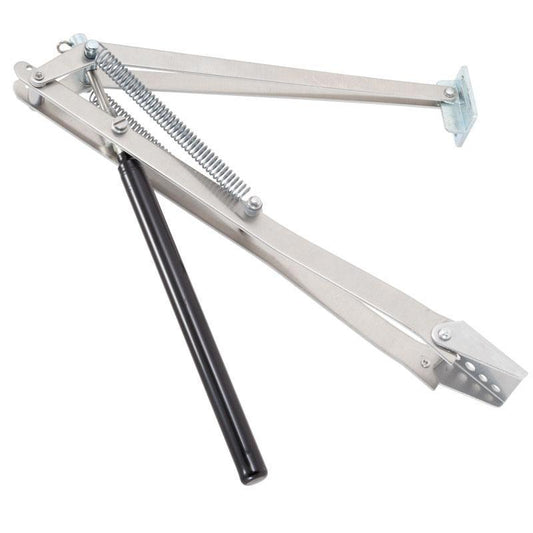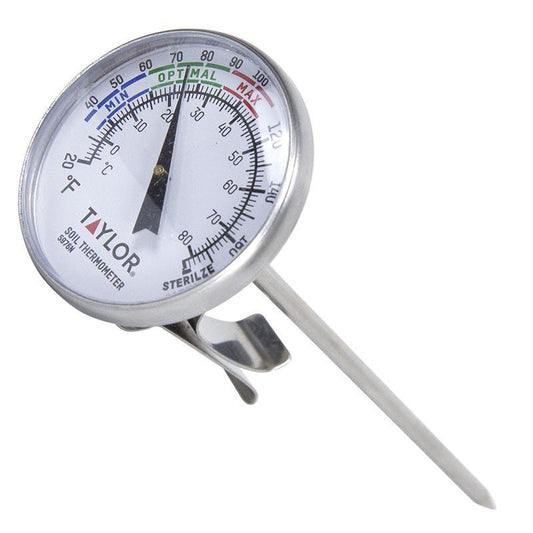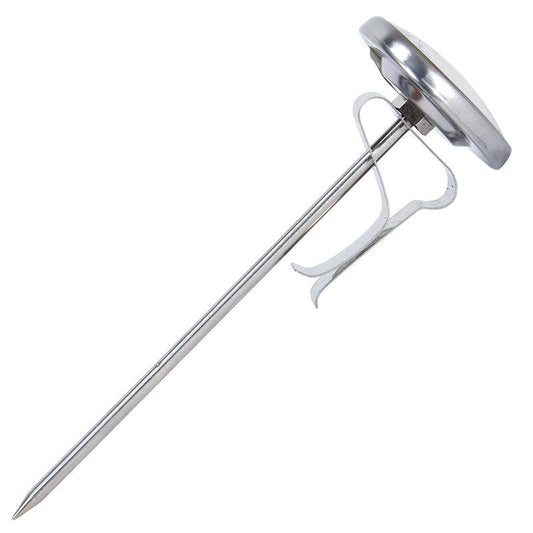How to Turn Your Cold Frame into a Hotbed for Year-Round Gardening
If you love gardening and want to extend your growing season, a cold frames can be your best friend. However, as temperatures drop, keeping your plants warm can be a challenge. That’s where manure-heated hotbeds come in!
Using horse or chicken manure to naturally warm up your cold frame is an effective and eco-friendly way to regulate soil temperature, ensuring your plants stay cozy even during the coldest months. With automatic vent openers, you can also prevent overheating and create an optimal environment for cold-hardy vegetables and seedlings.
In our video, Cold Frame and Hotbed Gardening, Tricia walks you through the process of building and positioning a cold frame in your garden, and how to convert it into a manure-heated or electrically heated hotbed.
What is the Difference Between a Cold Frame and a Hotbed?
• A cold frame is a small, enclosed garden structure designed to trap solar heat and protect plants from frost. It extends the growing season, allowing you to grow crops earlier in spring and later into fall.
• A hotbed is a heated version of a cold frame, using either electricity or decomposing manure to raise soil and air temperatures. This makes it possible to grow vegetables even during the coldest months.
By adding a heat source—whether it’s manure, compost, or electricity—you can convert your cold frame into a hotbed and continue to grow winter vegetables, seedlings, and transplants.
How to Use Manure to Heat Your Cold Frame
1. Choosing the Right Manure for Your Hotbed
• Horse manure is the best option for generating heat, as it contains a high percentage of straw and organic matter, making it perfect for slow and steady decomposition.
• Chicken manure also produces heat, but because it is very high in nitrogen, it tends to break down faster and generate intense heat in a short period.
• If you don’t have access to fresh manure, consider mixing compost with straw for a similar warming effect.
2. Building Your Manure-Heated Hotbed
If you already have a cold frame, you can easily modify it into a hotbed by following these steps:
Step 1: Choose a South-Facing Location
• Select a south-facing site with a natural windbreak to maximize sunlight and protection from harsh winter winds.
Step 2: Dig a Pit for the Manure
• Mark the area for your cold frame and dig down about 2 feet.
• This trench will serve as the foundation for your hotbed, where the manure will decompose and release heat.
Step 3: Create a Drainage Layer
• Add 4 inches of gravel at the bottom of the pit to ensure proper drainage.
• Good drainage prevents waterlogging and excessive moisture buildup, which can reduce the efficiency of the heating process.
Step 4: Add Fresh Manure and Water It
• Fill the pit with horse or chicken manure mixed with straw.
• Press it down firmly to eliminate air pockets and water it lightly to kickstart decomposition.
Step 5: Cover with Soil
• Add 4–6 inches of high-quality, weed-free soil on top of the manure.
• This will act as the growing medium for your plants while also insulating the heat below.
Step 6: Place the Cold Frame on Top
• Secure your cold frame structure over the prepared hotbed.
• Ensure that the lid or glass panels are properly fitted to trap heat efficiently.
Maintaining the Right Temperature in Your Hotbed
• Use a soil thermometer to monitor the heat inside the hotbed.
• The ideal soil temperature for germinating most vegetables is around 70–75°F.
• If temperatures rise too high, ventilation is key—this is where automatic vent openers come in handy!
How to Regulate Heat in a Hotbed
1. Use an Automatic Vent Opener
• Heat-activated vent openers automatically open and close the lid of the hotbed when temperatures fluctuate.
• This prevents overheating during sunny days while still maintaining warmth on cold nights.
2. Add Extra Insulation for Freezing Nights
• If temperatures drop too low, place straw bales, bubble wrap, or row covers around the cold frame for additional insulation.
3. Use a Thermal Blanket or Floating Row Covers
• Covering your plants with floating row covers can add an extra layer of warmth, helping them thrive even in harsh conditions.
Best Vegetables for Growing in a Hotbed
A manure-heated hotbed creates an ideal microclimate for growing cool-season crops, including:
• Lettuce
• Spinach
• Radishes
• Carrots
• Beets
• Swiss chard
• Scallions
• Broccoli
For fall and early spring planting, try our Frost-Kissed Seed Collection, which contains 10 organic, cold-hardy vegetable seed packs perfect for winter gardening in a hotbed.
Conclusion: Enjoy Fresh Winter Crops with a Manure-Heated Hotbed!
By transforming your cold frame into a hotbed, you can keep your garden productive all winter long. Whether you use horse manure, chicken manure, or an electric heating system, creating a warm, protected growing environment is easier than you think.
With the right insulation, proper ventilation, and a careful selection of cold-hardy vegetables, you can enjoy fresh greens and root crops throughout the chilly months.
So, get started today—build your own hotbed, extend your growing season, and grow organic for life!
For more information about manure heating for hotbeds, check out the Virginia Cooperative Extension, the University of Missouri Extension, and Purdue University. Many thanks to the Virginia Cooperative Extension for the use of their helpful diagram.
Resource Area
Greenhouse Setup & Ventilation Essentials
Explore greenhouse basics—including why automatic vent openers are vital for airflow and temperature:
- Greenhouses (Video) – Video guide on materials, heating, and ventilation techniques, highlighting the role of automatic vent openers in effective temperature regulation.
- Univent Automatic Vent Opener – Learn how this tool maintains airflow and prevents overheating in enclosed structures.
Winter Evergreen Planting Across Regions
Compare seasonal planting strategies for evergreens in similar winter climates:
- Planting Evergreens & Conifers in Willamette Valley’s Winter – Regional tips on timing and soil moisture.
- Planting Evergreens in Northern California’s Winter – Shares seasonal guidance on planting evergreens in mild western climates.








2 comments
For a heated cold frame does the manure have to be replenished every year ? Thanks
Do you have change the manure every year to maintain heat in a cold frame ?- Many Thanks